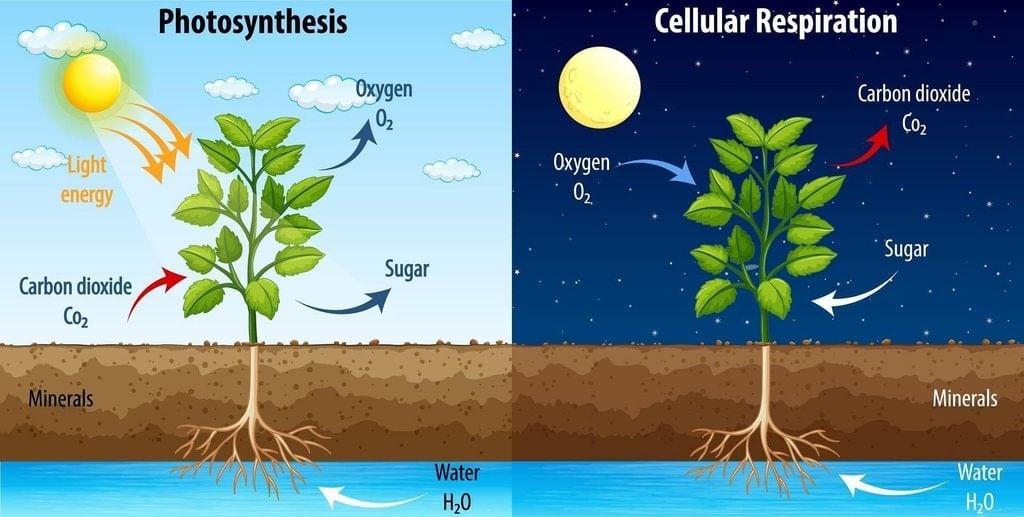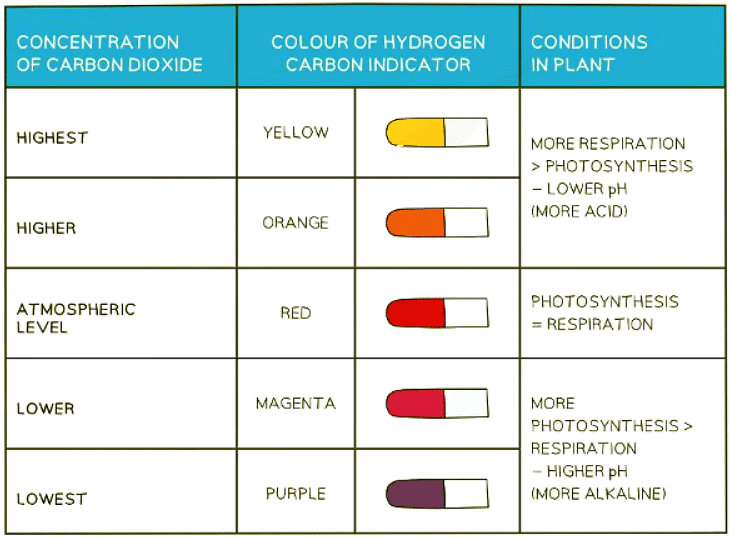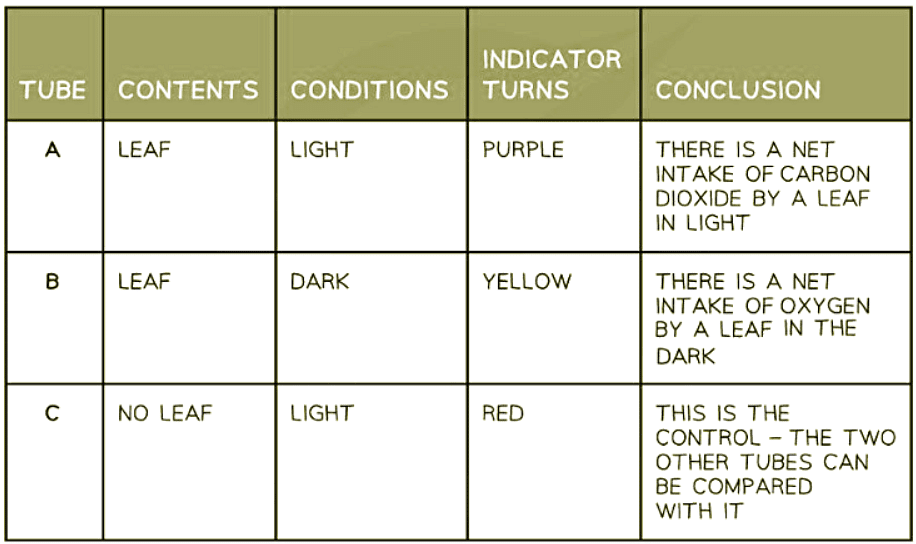Class 10 Exam > Class 10 Notes > Biology for GCSE/IGCSE > Gas Exchange
Gas Exchange | Biology for GCSE/IGCSE - Class 10 PDF Download
Investigating Gas Exchange
- Plants respire constantly to obtain energy through aerobic respiration, a process vital for their survival and growth. This continuous respiration ensures that plant cells have a constant supply of oxygen while expelling carbon dioxide, which is a byproduct of this metabolic process.
- In daylight, plants engage in photosynthesis, a crucial process where they convert light energy into chemical energy, using carbon dioxide to produce glucose and other organic compounds. Oxygen is released as a byproduct, essential for the sustenance of many life forms on Earth.
- Conversely, during the night, when sunlight is unavailable, photosynthesis halts, but respiration persists. This nighttime respiration maintains the plant's metabolic functions, ensuring the intake of oxygen and the release of carbon dioxide, which are pivotal for cellular processes.

- During the day, especially under bright sunlight, plants photosynthesize faster than they respire, resulting in a net intake of carbon dioxide and a net output of oxygen.
- We can investigate the effect of light on net gas exchange in an aquatic plant using a pH indicator like hydrogencarbonate indicator.
- This is possible because dissolved carbon dioxide forms an acidic solution.
- Hydrogencarbonate indicator reflects the carbon dioxide concentration in solution.
- The table below shows the color changes of the indicator at different carbon dioxide concentration levels:

- Several leaves from the same plant are placed in stoppered boiling tubes containing some hydrogencarbonate indicator.
- The effect of light can then be investigated over a period of a few hours.
- Results from a typical experiment are shown in the table below:

Question for Gas ExchangeTry yourself: What is the purpose of photosynthesis in plants?View Solution
The document Gas Exchange | Biology for GCSE/IGCSE - Class 10 is a part of the Class 10 Course Biology for GCSE/IGCSE.
All you need of Class 10 at this link: Class 10
|
101 videos|193 docs|33 tests
|
FAQs on Gas Exchange - Biology for GCSE/IGCSE - Class 10
| 1. How does gas exchange occur in plants? |  |
Ans. Gas exchange in plants occurs through small openings called stomata on the surface of leaves. Carbon dioxide enters the plant through the stomata, while oxygen and water vapor exit.
| 2. What is the role of photosynthesis and respiration in gas exchange in plants? |  |
Ans. Photosynthesis is the process by which plants take in carbon dioxide and release oxygen, while respiration is the process by which plants take in oxygen and release carbon dioxide. These processes play a crucial role in gas exchange in plants.
| 3. How does the structure of leaves contribute to gas exchange in plants? |  |
Ans. The structure of leaves, including the presence of stomata and a large surface area, helps facilitate gas exchange in plants. Stomata allow for the exchange of gases, while the large surface area of leaves allows for efficient absorption of carbon dioxide.
| 4. What factors can affect gas exchange in plants? |  |
Ans. Factors such as temperature, humidity, and light intensity can affect gas exchange in plants. For example, high temperatures can lead to stomata closing to prevent water loss, impacting gas exchange.
| 5. How can we investigate gas exchange in plants in a laboratory setting? |  |
Ans. Gas exchange in plants can be investigated in a laboratory setting by measuring the rate of oxygen production or carbon dioxide uptake using a photosynthesis or respiration apparatus. This allows for the study of factors that affect gas exchange in plants.
Related Searches















